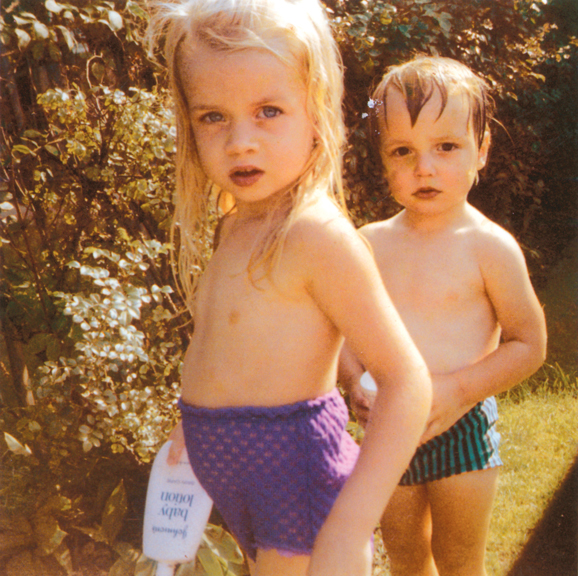[Summer 2008]
International Center of Photography, New York,
January 18 – May 4, 2008
An overall sense of clutter and discomfort pervades the installation of Archive Fever: Uses of the Document in Contemporary Art, the current exhibition at the International Center of Photography (ICP) curated by Okui Enwenzor and modlelled on Jacques Derrida’s seminal essay Mal d’Archive. Based on Derrida’s feverish search for historical origins in individuals and societies, Enwenzor stages twenty-five international artists working between the 1960s and the present, investigating their uses of photography, film, and video as “the quintessential mediums of modern documentary truth” (wall text).
The theoretical premises of the project sound familiar. Enwenzor situates his show within core investigations of contemporary art – that is, Benjamin Buchloh’s study of Gerhard Richter’s “anomic” archive and Hal Foster’s analysis of the “archival impulse” of artists working as collectors and montageurs of time scraps. Enwenzor confronts these critical positions and takes one step further, looking at the particular role and function of the camera, which is, as he writes, “literally, an archiving machine.” Which contemporary artists are using photography and film in order to reinscribe history in the present, and what are their strategies?
A large group of works exhibited at ICP are involved with the appropriation of archival sources and their transformation into new stories. Andy Warhol’s use of the media as a public archive seems dated, but Enwenzor isolates his contribution as a key starting point for reflection on the critical role of photography in public memory. It is unfortunate that Warhol’s Race Riot (1963) is not presented as introduction to the show, but remains rather hidden in the background. Warhol’s appropriation of a page from Life magazine begins a red thread that is followed by the works of Felix Gonzalez-Torres, Christian Boltanski, Hans-Peter Feldmann, Ilan Lieberman, Robert Morris, Walid Raad, and Tacita Dean – all artists who have used the media as a malleable historical trace on which they have commented and rewritten. Their installations reveal the incredible range of contemporary archival “monuments” that can be created from photographic “documents.” Gonzalez-Torres shows the use of mechanical reproduction in his stacked offset prints of 464 people who died from gunshots across America during one week.
If this inventory looks like a modern coffin of printed matter, the monumental installation by Christian Boltanski mimics the obsessive organization of nineteenth-century archives and shows the deception of such a system. It is no longer clear in his Reserve/Detective who is the criminal and who is the victim, but each face is photographed and embalmed, like a dead bug pinned to its box. Hans-Peter Feldmann’s tight placement of a hundred front pages of newspapers across the world published on September 12, 2001, revisits the trauma of one of the most mediatized events of recent history. Ilan Lieberman’s drawings based on photographs of missing children found in recent Mexican newspapers retrace the outlines of those faces, rendering their features even more ghostly in the transcription. Robert Morris manipulates a gruesome record of the dead naked body of a young mother from the Bergen-Belsen concentration camp, transforming this document into a quasi-seductive figure, and surrounding it with a frame carved with fragments of human body parts. The horror of the photograph returns in the artist’s creation of a terrifying reliquary carved with human fragments. Similarly, Eyal Sivan’s re-editing of the original footage shot during the 1961 trial of Adolf Eichmann transforms and subverts the archival truth of that document.
The thread that connects these artists’ works is the questioning of the authority of the archive and its impact on the public domain. Walid Raad, the creator of a fictitious archive representing the Lebanese wars, is a master of this dispute between true and false. Similarly, but in the realm of private lives, Zoe Leonard stages and manufactures the photographic archive of the imaginary Hollywood actress Fae Richards, once dispersed and recomposed by the artist; Vivan Sundaram uncovers his grandfather’s family archive, revealing an improbable – and yet true – history of cosmopolitanism in turn-of-the-century India and Europe.
But it is not only history that is contested here. The aura and uniqueness of the photograph is subverted by the quintessentially post-modern gesture of Sherrie Levine after Walker Evans, and by the more recent postcolonial appropriation of Robert Mapplethorpe’s photographs by Glenn Ligon. If the combination of Evans and Mapplethorpe in the same room feels very awkward, the point is that Levine and Ligon, like many artists in the show, are able to detach themselves from the original trace and recreate their own historical artefacts.
The overall survey of these works is extremely varied and original, and is presented as a cool intellectual exercise. Photography and film are thin and fragile surfaces that can be reinterpreted over and over again, without being grounded to actual stories.
In only one instance does the exhibition allow the artefact to work as a powerful trigger of memory. That is when Lamia Joreige revisits the Lebanese wars, asking individual subjects to select an object that reflects their memory of the war. The piece consists of video interviews and the installation of the actual ordinary objects, revealing the deep abyss of those memories through ephemeral objects displayed in museum wall-cases. Something continues to live and breathe there, with artefacts and photographs still active, within the muddled artists’ interventions and denial of what “truth” might have meant, once the picture was taken, and then released to the world.
Maria Antonella Pelizzari is an associate professor in the Department of Art at Hunter College (New York). She is the editor of the book Traces of India: Photography, Architecture, and the Politics of Representation, 1850–1900.


